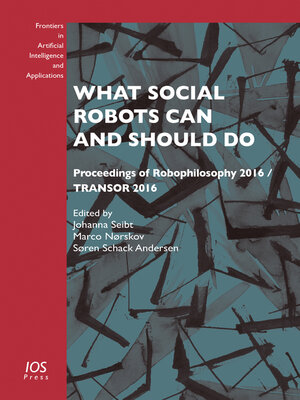What Social Robots Can and Should Do
ebook ∣ Proceedings of Robophilosophy 2016 / TRANSOR 2016 · Frontiers in Artificial Intelligence and Applications
By Johanna Seibt

Sign up to save your library
With an OverDrive account, you can save your favorite libraries for at-a-glance information about availability. Find out more about OverDrive accounts.
Find this title in Libby, the library reading app by OverDrive.



Search for a digital library with this title
Title found at these libraries:
| Library Name | Distance |
|---|---|
| Loading... |
Social robotics drives a technological revolution of possibly unprecedented disruptive potential, both at the socio-economic and the socio-cultural level. The rapid development of the robotics market calls for a concerted effort across a wide spectrum of academic disciplines to understand the transformative potential of human-robot interaction. This effort cannot succeed without the special expertise in the study of socio-cultural interactions, norms, and values that humanities research provides.
This book contains the proceedings of the conference "What Social Robots Can and Should Do," Robophilosophy 2016 / TRANSOR 2016, held in Aarhus, Denmark, in October 2016. The conference is the second event in the biennial Robophilosophy conference series, this time combined with an event of the Research Network for Transdisciplinary Studies in Social Robotics (TRANSOR). Featuring 13 plenaries and 74 session and workshop talks, the event turned out to be the world's largest conference in Humanities research in and on social robotics. The book is divided into 3 sections: Part I and Part III contain the abstracts of plenary lectures and contributions to 6 workshops: Artificial Empathy; Co-Designing Children Robot Interaction; Human-Robot Joint Action; Phronesis for Machine Ethics?; Robots in the Wild; and Responsible Robotics. Part II contains short papers for presentations in 7 thematically organized sessions: methodological issues; ethical tasks and implications; emotions in human robot interactions; education, art and innovation; artificial meaning and rationality; social norms and robot sociality; and perceptions of social robots.
The book will be of interest to researchers in philosophy, anthropology, sociology, psychology, linguistics, cognitive science, robotics, computer science, and art. Since all contributions are prepared for an interdisciplinary readership, they are highly accessible and will be of interest to policy makers and educators who wish to gauge the challenges and potentials of putting robots in society.







